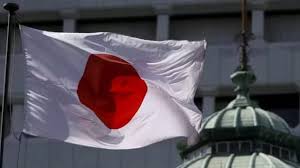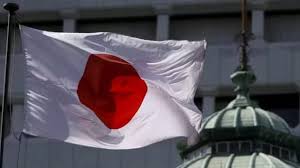
Japan’s economy delivered an unexpected boost in the fourth quarter of last year, with GDP expanding at an annualized rate of 2.8%—a figure that far surpassed the forecasted 1.0%. This robust performance, largely driven by stronger business spending and a modest increase in consumption, raises important questions about the underlying drivers and the sustainability of the recovery.
Japan’s Q4 growth has turned heads, as preliminary data indicate an annualized increase of 2.8%. This surge, propelled by improved business investment and a modest uptick in consumer spending, significantly outpaced market expectations. The headline figure, however, reflects not only genuine expansion but also the statistical benefit of reduced imports. As imports fell, the net trade balance improved, contributing to the overall GDP increase. Yet, behind this optimistic number lies a more nuanced picture.
Drivers Behind the Growth
Business Investment and Trade Dynamics
Robust capital expenditure played a key role, with business investments rising by 0.5% during the quarter. This increase reflects a renewed confidence among corporations in Japan’s long-term prospects. At the same time, improved net trade contributed positively as a result of falling imports. The reduction in import volumes indicates that while Japan’s external demand remains healthy, there may be underlying weaknesses in domestic demand that are masking a more modest expansion in internal consumption.
Modest Consumption Boost
Private consumption, which makes up a significant portion of GDP, increased by only 0.1%. This slight improvement was partially driven by temporary year-end bonuses that injected extra cash into household spending. However, the bonus effect is expected to be short-lived. Once these one-off payments fade, there is a risk that consumer spending could slow, potentially dampening future growth figures. Historical revisions in Japan’s GDP data have shown that headline numbers sometimes reflect temporary factors rather than a durable recovery.
Temporary Factors and Cautions
While the strong Q4 performance has lifted spirits in Tokyo and boosted the Nikkei stock index, caution remains warranted. The surge is partially attributable to temporary factors—specifically, the impact of year-end bonuses and a decline in imports. Similar instances in the past have demonstrated that such statistical boosts can sometimes overstate the true strength of the recovery. Analysts warn that once these factors dissipate, the underlying growth may not be as resilient, especially if consumer demand weakens further.
Implications for Monetary Policy
The upbeat GDP data reinforces the Bank of Japan’s rationale for further tightening of monetary policy. After decades of near-zero rates designed to combat deflation, the current surge in growth provides the central bank with a stronger case for additional interest rate hikes. A shift from an ultra-loose monetary stance marks a significant turning point for Japan, where higher rates could gradually normalize borrowing costs and potentially strengthen the yen. However, policymakers must balance these measures carefully. Raising rates too quickly might cool the economy prematurely, while delays could risk overheating certain sectors.
Export and Tariff Uncertainties
Improved external demand has been a significant contributor to Japan’s growth. Yet, this positive factor comes with its own set of risks. Japan’s export-reliant economy remains vulnerable to potential tariff measures, particularly from the United States. There is concern that any escalation in U.S. tariff policies could reverse the gains made in export volumes. Such uncertainties are reminiscent of earlier periods of global trade tensions that had adverse effects on Japan’s trade balance and overall economic performance.
Context from Similar Incidents
Previous episodes of unexpected GDP surprises in Japan often involved statistical adjustments and temporary external factors. For instance, during earlier recovery phases following periods of deflation and economic stagnation, headline growth figures were sometimes buoyed by transient factors—such as sudden drops in imports or one-off fiscal stimuli—that did not translate into a lasting recovery. In similar situations, the subsequent quarters revealed that underlying domestic demand was weaker than initially reported. These historical parallels underscore the importance of interpreting current data with caution and understanding that a temporary rebound does not necessarily signal a sustained turnaround.
Market and Currency Reactions
The positive GDP data had immediate effects on financial markets. Tokyo’s Nikkei index recorded significant gains, and the Japanese yen experienced an uptick in value. While these reactions suggest renewed investor confidence, some analysts caution that the market’s response may partly reflect the statistical impact of lower imports and the fleeting bonus-driven consumption. The yen’s strength is a double-edged sword; although it signals improved economic fundamentals, a stronger yen can also make exports less competitive in the global market.
Sustainability of the Recovery
A key concern is whether the current surge in growth is sustainable. Despite the encouraging figures, underlying consumer demand remains weak. Rising food prices and the potential dissipation of year-end bonuses could weigh on household spending in the coming quarters. Japan’s economic recovery has, in part, been a story of short-term boosts rather than a robust, structural rebound. To sustain growth, efforts must go beyond temporary fiscal measures. Long-term improvements in domestic consumption and productivity will be essential to maintain momentum.
Policy Challenges Ahead
Policymakers in Japan now face a complex balancing act. On one side is the need to manage the risk of overheating from successive interest rate hikes; on the other is the challenge of addressing structural issues within the domestic economy. Weak underlying consumption—despite the surge in GDP—signals that without continuous support, the economy could falter once temporary factors fade. This dual challenge has historical echoes, as Japan has previously navigated similar headwinds during its recovery phases following deflationary periods. Strategic adjustments in both monetary and fiscal policies will be critical to ensure that growth is not only revived but also made sustainable in the long run.
The performance in Q4 sets the stage for the upcoming quarters. The coming months will be crucial in determining if this surge represents a genuine turnaround or is merely a temporary rebound. With mixed signals from domestic consumption and external trade pressures, future data releases will be closely monitored. Strategic adjustments in policy will be necessary—both to counter potential headwinds from rising tariffs and to support the resumption of robust domestic demand. As Japan navigates these challenges, the interplay between monetary tightening and fiscal measures will be pivotal in shaping the economic landscape.
Japan’s surprising Q4 GDP growth of 2.8% reflects a confluence of strong business spending, improved net trade, and temporary fiscal stimuli such as year-end bonuses. While the headline number paints a promising picture, deeper scrutiny reveals that the recovery may be built on transient factors. This raises important questions about the durability of the rebound, especially given ongoing concerns about weak underlying consumer demand and the potential impact of external trade uncertainties.
The Bank of Japan’s policy implications are significant. With the economy showing unexpected strength, the case for further interest rate hikes is bolstered. However, policymakers must carefully weigh the benefits of tightening against the risk of stifling domestic consumption. The historical context serves as a reminder that previous surges have sometimes been followed by subdued performance once temporary factors recede.
Moving forward, the critical test for Japan will be in the coming quarters. Sustaining this growth will require not only smart monetary policy but also decisive fiscal measures to address structural weaknesses in domestic demand. For Japan to emerge as a resilient economy, a balanced approach that integrates short-term boosts with long-term reforms is essential. Ultimately, the path Japan takes in the near future will determine whether this growth surge is a turning point or a temporary anomaly in its ongoing economic journey.
(Source:www.rte.ie)
Japan’s Q4 growth has turned heads, as preliminary data indicate an annualized increase of 2.8%. This surge, propelled by improved business investment and a modest uptick in consumer spending, significantly outpaced market expectations. The headline figure, however, reflects not only genuine expansion but also the statistical benefit of reduced imports. As imports fell, the net trade balance improved, contributing to the overall GDP increase. Yet, behind this optimistic number lies a more nuanced picture.
Drivers Behind the Growth
Business Investment and Trade Dynamics
Robust capital expenditure played a key role, with business investments rising by 0.5% during the quarter. This increase reflects a renewed confidence among corporations in Japan’s long-term prospects. At the same time, improved net trade contributed positively as a result of falling imports. The reduction in import volumes indicates that while Japan’s external demand remains healthy, there may be underlying weaknesses in domestic demand that are masking a more modest expansion in internal consumption.
Modest Consumption Boost
Private consumption, which makes up a significant portion of GDP, increased by only 0.1%. This slight improvement was partially driven by temporary year-end bonuses that injected extra cash into household spending. However, the bonus effect is expected to be short-lived. Once these one-off payments fade, there is a risk that consumer spending could slow, potentially dampening future growth figures. Historical revisions in Japan’s GDP data have shown that headline numbers sometimes reflect temporary factors rather than a durable recovery.
Temporary Factors and Cautions
While the strong Q4 performance has lifted spirits in Tokyo and boosted the Nikkei stock index, caution remains warranted. The surge is partially attributable to temporary factors—specifically, the impact of year-end bonuses and a decline in imports. Similar instances in the past have demonstrated that such statistical boosts can sometimes overstate the true strength of the recovery. Analysts warn that once these factors dissipate, the underlying growth may not be as resilient, especially if consumer demand weakens further.
Implications for Monetary Policy
The upbeat GDP data reinforces the Bank of Japan’s rationale for further tightening of monetary policy. After decades of near-zero rates designed to combat deflation, the current surge in growth provides the central bank with a stronger case for additional interest rate hikes. A shift from an ultra-loose monetary stance marks a significant turning point for Japan, where higher rates could gradually normalize borrowing costs and potentially strengthen the yen. However, policymakers must balance these measures carefully. Raising rates too quickly might cool the economy prematurely, while delays could risk overheating certain sectors.
Export and Tariff Uncertainties
Improved external demand has been a significant contributor to Japan’s growth. Yet, this positive factor comes with its own set of risks. Japan’s export-reliant economy remains vulnerable to potential tariff measures, particularly from the United States. There is concern that any escalation in U.S. tariff policies could reverse the gains made in export volumes. Such uncertainties are reminiscent of earlier periods of global trade tensions that had adverse effects on Japan’s trade balance and overall economic performance.
Context from Similar Incidents
Previous episodes of unexpected GDP surprises in Japan often involved statistical adjustments and temporary external factors. For instance, during earlier recovery phases following periods of deflation and economic stagnation, headline growth figures were sometimes buoyed by transient factors—such as sudden drops in imports or one-off fiscal stimuli—that did not translate into a lasting recovery. In similar situations, the subsequent quarters revealed that underlying domestic demand was weaker than initially reported. These historical parallels underscore the importance of interpreting current data with caution and understanding that a temporary rebound does not necessarily signal a sustained turnaround.
Market and Currency Reactions
The positive GDP data had immediate effects on financial markets. Tokyo’s Nikkei index recorded significant gains, and the Japanese yen experienced an uptick in value. While these reactions suggest renewed investor confidence, some analysts caution that the market’s response may partly reflect the statistical impact of lower imports and the fleeting bonus-driven consumption. The yen’s strength is a double-edged sword; although it signals improved economic fundamentals, a stronger yen can also make exports less competitive in the global market.
Sustainability of the Recovery
A key concern is whether the current surge in growth is sustainable. Despite the encouraging figures, underlying consumer demand remains weak. Rising food prices and the potential dissipation of year-end bonuses could weigh on household spending in the coming quarters. Japan’s economic recovery has, in part, been a story of short-term boosts rather than a robust, structural rebound. To sustain growth, efforts must go beyond temporary fiscal measures. Long-term improvements in domestic consumption and productivity will be essential to maintain momentum.
Policy Challenges Ahead
Policymakers in Japan now face a complex balancing act. On one side is the need to manage the risk of overheating from successive interest rate hikes; on the other is the challenge of addressing structural issues within the domestic economy. Weak underlying consumption—despite the surge in GDP—signals that without continuous support, the economy could falter once temporary factors fade. This dual challenge has historical echoes, as Japan has previously navigated similar headwinds during its recovery phases following deflationary periods. Strategic adjustments in both monetary and fiscal policies will be critical to ensure that growth is not only revived but also made sustainable in the long run.
The performance in Q4 sets the stage for the upcoming quarters. The coming months will be crucial in determining if this surge represents a genuine turnaround or is merely a temporary rebound. With mixed signals from domestic consumption and external trade pressures, future data releases will be closely monitored. Strategic adjustments in policy will be necessary—both to counter potential headwinds from rising tariffs and to support the resumption of robust domestic demand. As Japan navigates these challenges, the interplay between monetary tightening and fiscal measures will be pivotal in shaping the economic landscape.
Japan’s surprising Q4 GDP growth of 2.8% reflects a confluence of strong business spending, improved net trade, and temporary fiscal stimuli such as year-end bonuses. While the headline number paints a promising picture, deeper scrutiny reveals that the recovery may be built on transient factors. This raises important questions about the durability of the rebound, especially given ongoing concerns about weak underlying consumer demand and the potential impact of external trade uncertainties.
The Bank of Japan’s policy implications are significant. With the economy showing unexpected strength, the case for further interest rate hikes is bolstered. However, policymakers must carefully weigh the benefits of tightening against the risk of stifling domestic consumption. The historical context serves as a reminder that previous surges have sometimes been followed by subdued performance once temporary factors recede.
Moving forward, the critical test for Japan will be in the coming quarters. Sustaining this growth will require not only smart monetary policy but also decisive fiscal measures to address structural weaknesses in domestic demand. For Japan to emerge as a resilient economy, a balanced approach that integrates short-term boosts with long-term reforms is essential. Ultimately, the path Japan takes in the near future will determine whether this growth surge is a turning point or a temporary anomaly in its ongoing economic journey.
(Source:www.rte.ie)





